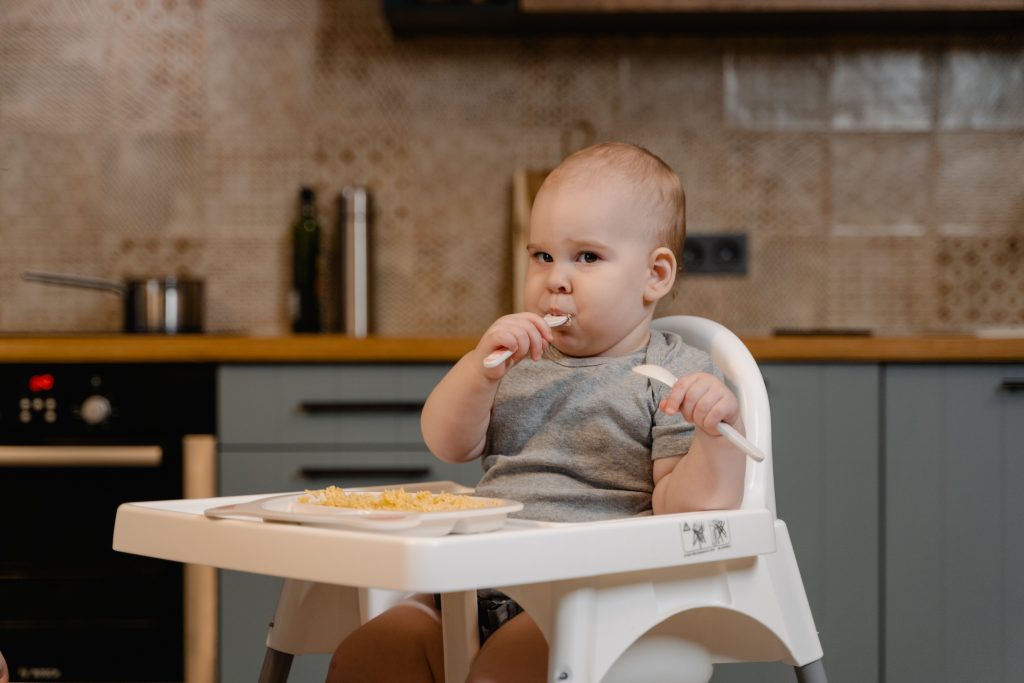Written by Speech Pathologist & Manager of DWSP’s Feeding Clinic, Dilinie
She was six months old and we excitedly got the camera out in anticipation of a new milestone. Her highchair had arrived in the mail a week previously and we quickly got to know our way around an allen key as we assembled it, popped her in and snapped the moment. We marvelled at how time had flown. Wasn’t it just yesterday we had brought her home for the first time from hospital wondering what we do with this baby in our arms?
We were starting solids with our first born and we wanted to capture the moment. I had prepared some puree and sat down to feed her whilst my husband watched us through the camera lens, ready to snap away. It did not go well.
I had expected my daughter to excitedly open her mouth and gobble up each mouthful I presented her. Instead she gagged and spat out every spoonful before bursting into tears. We continued to persist with purees for a few more days before I realised she simply did not like purees. In response to her preferences I decided to try her with finger foods. Finally! Success! She kicked her legs around widely as she sucked and devoured her vegemite toast. I watched her hold a lamb chop as she sucked and gummed the flesh. We moved to a more baby led weaning approach and finally our daughter started eating.
Fast forward two year later and my son was ready to start solids. Being the complete opposite of his sister, he devoured purees and couldn’t get enough. When I presented him with finger foods, he would reject it and cry until we fed him a puree. He was hungry and he wanted to take in as much food as he could, the easiest way he knew; in puree form.
Children are so different in their development, temperament and personality. When it comes to eating, they are no different. It is vital we take a more responsive feeding approach when it comes to mealtimes with our children. My oldest has taught me a great deal when it comes to food in terms of sensory perceptions, texture aversion, and anxiety around new things. She continues to be selective in her choice of foods she will eat but it is my role to continue to encourage her in her exploration of new foods.
The Division of Responsibility (DOR) model to eating is now an integral part of mealtimes in our home. If you are struggling with your own “fussy eater”, I would encourage you take a look at this approach. Developed by Ellyn Satter the model clearly lays out the responsibility of each member at the table. Parents are responsible for the WHAT is served for each mealtime, WHEN it is served and WHERE it is served. Children are responsible for WHETHER they eat and HOW MUCH they eat. When we as parents cross these boundaries and attempt to take over the child’s responsibility of whether and how much they eat, we set ourselves up for stressful mealtimes. Likewise when children attempt to dictate the WHAT, WHEN and WHERE, they can disrupt their own hunger cues and ultimately turn mealtimes into battles.
If you are struggling with mealtimes with your child, you will find lots of resources on division of responsibility here. What are your mealtimes like at home? Perhaps a good place to start may be around mealtime routines allowing you to establish your role around the WHEN and WHERE of eating.
If you are unsure of whether your child falls under the category of normal picky eater or you are concerned they are actually a problem feeder, refer to Dr Kay Toomey’s chart comparing the two. If you are still concerned your child may require professional support around eating, seek out a speech pathologist specialising in feeding for an initial consult. You don’t need to ride this out on your own. We are here to help.

